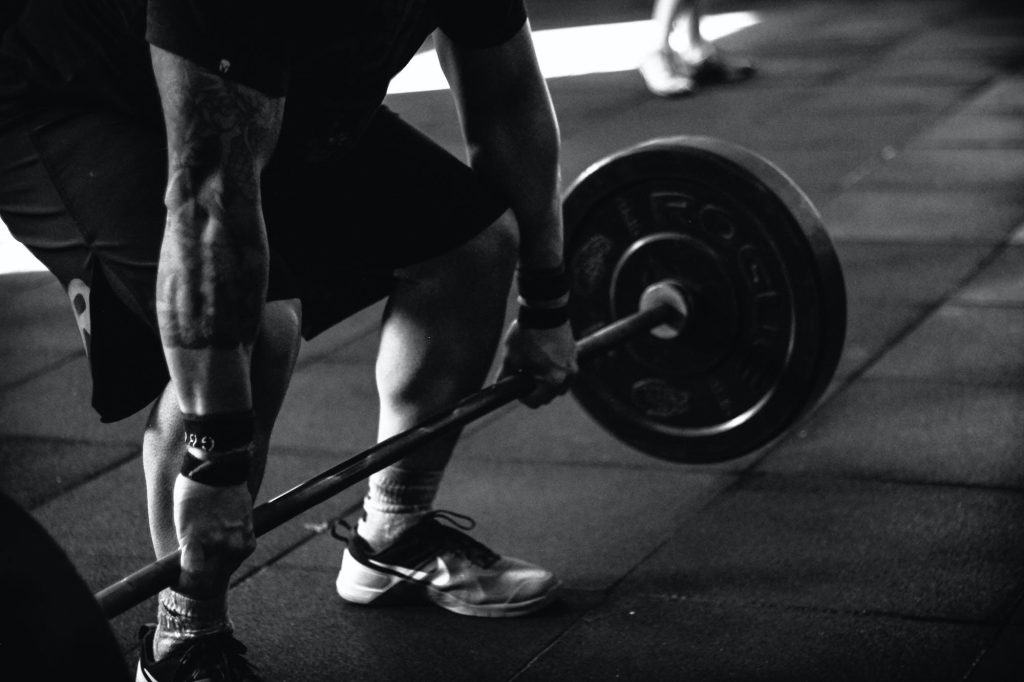If you’ve ever wondered whether your ab workouts are doing more than just sculpting your core, we’ve got some answers for you. In this article, we’ll explore the frequently asked question of whether ab workouts can actually improve your digestion or boost your metabolism. While their primary purpose may be to tone your abs, you might be surprised to learn that these exercises can have additional benefits beyond just a six-pack. So let’s dive into the world of ab workouts and discover the potential effects they can have on your digestion and metabolism.
Can Ab Workouts Improve Digestion?
The Connection Between Abs and Digestion
When you think about working out your abs, you might not immediately associate it with digestion. However, there is actually a strong connection between the two. Your abdominal muscles play a crucial role in supporting your digestive system. They help to maintain proper posture and alignment, which allows for efficient digestion. Additionally, engaging and strengthening your abs can improve blood flow to the digestive organs, promoting healthy digestion.
How Ab Workouts Can Support Digestion
Ab workouts can have a positive impact on your digestion in several ways. First and foremost, they help to strengthen the muscles in your abdomen, including the rectus abdominis, transverse abdominis, and obliques. This increased muscle strength provides better support for your internal organs, allowing them to function optimally.
Furthermore, ab exercises often involve movements that require twisting, bending, and stretching. These actions can help to stimulate the muscles surrounding your digestive organs, promoting better digestion. Additionally, some ab exercises, such as yoga poses, can apply gentle pressure to your abdomen, which can help to stimulate peristalsis, the involuntary muscle contractions that move food through your digestive system.
Benefits of a Strong Core for Digestion
Having a strong core goes beyond just having six-pack abs. A well-developed core can have numerous benefits for your digestion. One of the main advantages is improved posture. When your core muscles are strong, they help to keep your spine properly aligned. This not only reduces the risk of back pain but also ensures that your digestive organs are in the correct position for optimal function.
Additionally, a strong core can contribute to a healthier digestive system by improving blood circulation. When you engage your core muscles during workouts, you increase blood flow to your abdominal area. This improved circulation brings more oxygen and nutrients to your digestive organs, enhancing their overall function.
Exercises to Improve Digestion
There are several exercises that you can incorporate into your routine to help improve digestion. One effective exercise is the seated twist. To perform this exercise, sit on the floor with your legs extended in front of you. Cross your right foot over your left knee, and place your right hand on the ground behind you for support. Then, twist your torso to the right, placing your left elbow against your right knee. Hold this position for a few seconds, and then repeat on the other side.
Another great exercise for digestion is the cat-camel stretch. Start on your hands and knees, with your hands directly under your shoulders and your knees under your hips. Begin by rounding your back upward, tucking your chin towards your chest. Then, slowly arch your back downward, lifting your chest and looking upwards. Repeat this movement, focusing on the contraction and stretching of your abdominal muscles.
Can Ab Workouts Boost Metabolism?
Understanding Metabolism
Before diving into the impact of ab workouts on metabolism, it is important to have a basic understanding of what metabolism is. Essentially, metabolism refers to all the chemical reactions that occur within your body to maintain life. It involves processes such as breaking down food and converting it into energy, as well as eliminating waste products. Your basal metabolic rate (BMR) is the number of calories your body needs to function at rest.
The Effect of Ab Workouts on Metabolism
While ab workouts alone may not have a significant impact on your overall metabolism, they can still play a role in boosting it. When you engage in intense ab exercises, such as planks or crunches, you activate large muscle groups in your core. This increased muscle activation leads to a higher calorie burn during and after your workout. As a result, it can contribute to a slight increase in your metabolic rate.
Additionally, having a well-developed core can indirectly support a healthy metabolism. A strong core allows you to perform other exercises and movements with greater stability and efficiency. This means that you can engage in higher intensity workouts, such as HIIT or weightlifting, which can have a more significant impact on your metabolism.
Benefits of Increasing Metabolism
Boosting your metabolism can have several benefits beyond just burning calories. A higher metabolic rate can aid in weight management by helping to maintain a healthy body weight. It allows your body to efficiently convert food into energy, reducing the likelihood of excess calories being stored as fat.
Furthermore, an increased metabolism can enhance your overall energy levels. When your body is able to efficiently convert food into usable energy, you may feel more energized throughout the day. This can lead to improved productivity and a higher quality of life.
Key Ab Exercises to Boost Metabolism
To specifically target your abdominal muscles and boost your metabolism, there are a few key exercises that you can incorporate into your routine. One effective exercise is the bicycle crunch. Lie on your back with your hands behind your head and your knees bent. Lift your shoulders off the ground and bring your right elbow towards your left knee, while extending your right leg straight out. Return to the starting position and repeat on the other side.
Another great exercise for both your abs and metabolism is the mountain climber. Begin in a plank position with your hands directly under your shoulders. Keeping your core engaged, bring one knee towards your chest, while maintaining a stable upper body. Alternate legs quickly, as if you are running in place. This exercise targets your entire core and promotes a higher calorie burn.

Importance of a Strong Core
Core Muscles and their Functions
Your core muscles go beyond just your abdominal muscles. They include a group of muscles that work together to provide stability and support for your entire body. These muscles include the rectus abdominis, transverse abdominis, obliques, erector spinae, and the muscles in your lower back and pelvis.
The core muscles have multiple functions, including maintaining proper posture, stabilizing your spine, and facilitating movements. They provide a strong foundation for all movements, whether it’s sitting, standing, lifting heavy objects, or performing athletic activities. Having a strong core is essential for overall strength and stability.
Impact of a Weak Core
When your core muscles are weak, it can have a negative impact on your body as a whole. Firstly, a weak core can lead to poor posture. If your core is not able to provide adequate support, you may slouch or lean forward, putting strain on your back and other areas of your body. This can lead to discomfort and potential musculoskeletal imbalances.
Additionally, a weak core can impair your balance and stability. Your core muscles are responsible for maintaining balance and providing stability during movements. If they are weak, you may be more prone to falls or accidents, which can lead to injuries.
The Relationship Between a Strong Core and Digestion/Metabolism
A strong core not only benefits your posture, balance, and stability, but it also has a direct impact on your digestion and metabolism. As mentioned earlier, a strong core helps to maintain proper alignment of your spine, which supports the optimal function of your digestive organs. Good posture allows for better digestion by preventing compression of your internal organs and allowing for smoother movement of waste products through your digestive system.
Furthermore, a strong core supports a healthy metabolism. When your core muscles are engaged, they require more energy to function. This increased energy expenditure can contribute to a higher metabolic rate and improved calorie burn.
Strengthening Abs for Overall Health
The Role of Ab Exercises in Overall Health
Strong abs go beyond just aesthetics. Engaging in regular ab exercises can have numerous benefits for your overall health. Firstly, they contribute to a stronger core, as mentioned earlier. A strong core provides stability and support for daily activities, reducing the risk of injury and improving overall functional fitness.
Ab exercises also play a role in improving your posture. By strengthening the muscles in your abdomen, you can help to counteract the effects of prolonged sitting or slouching. This can alleviate back pain and improve your spinal alignment.
Improving Posture with Strong Abs
Good posture is essential for overall health and wellness. When your body is in proper alignment, it reduces the strain on your muscles and joints. Strong abs help to support the natural curves of your spine, reducing the risk of chronic pain and injuries.
To improve your posture, incorporate exercises that target your abdominal muscles, such as planks, standing side bends, or Pilates. By strengthening your abs, you will improve your core stability and maintain a more upright, aligned posture.
Enhancing Balance and Stability
Maintaining good balance and stability is crucial, especially as we age. Ab exercises can help to improve your balance and stability by targeting the core muscles responsible for these functions. A stronger core allows you to remain stable while performing various activities, such as walking on uneven surfaces or participating in sports.
Incorporate exercises that challenge your balance, such as single-leg stands, Russian twists, or stability ball exercises. These exercises promote coordination and proprioception, which are important aspects of balance.

Proper Nutrition for Optimal Abs and Digestive Health
The Link Between Diet and Abs
While ab workouts are important for strengthening your abdominal muscles, proper nutrition plays a key role in revealing those toned abs. To effectively showcase your abs, you need to reduce body fat through a combination of exercise and a healthy diet. This means focusing on a balanced diet that is rich in whole, unprocessed foods.
The saying “abs are made in the kitchen” holds true for a reason. To reduce body fat, you need to create a calorie deficit by consuming fewer calories than you burn. This doesn’t mean you have to restrict yourself excessively. Rather, aim for a moderate calorie deficit and prioritize nutrient-dense foods to support overall health.
Foods that Support Digestion and Abs
Certain foods can have a positive impact on both your digestive health and your abs. Firstly, high-fiber foods, such as fruits, vegetables, whole grains, and legumes, promote healthy digestion by adding bulk to your stool and preventing constipation. They also provide essential nutrients and help to regulate blood sugar levels.
In terms of abs, incorporating lean protein sources, such as chicken, fish, tofu, or lentils, can help to build and maintain muscle mass. Protein is essential for muscle growth and repair, and it also aids in satiety, helping to control your appetite.
Furthermore, healthy fats, like avocados, nuts, and olive oil, are important for nutrient absorption and promoting a feeling of fullness. These fats can help to keep your energy levels stable and prevent overeating.
Optimal Nutrient Intake for a Healthy Metabolism
To maintain a healthy metabolism, it’s important to ensure you’re providing your body with adequate nutrients. This includes consuming a balanced intake of macronutrients (carbohydrates, protein, and fat) as well as essential vitamins and minerals.
Carbohydrates are your body’s main source of energy, so it’s important to choose complex carbohydrates, such as whole grains, fruits, and vegetables. Protein is essential for muscle growth and repair, so aim to include lean sources in your diet. Additionally, healthy fats are important for hormone production and overall health.
In terms of vitamins and minerals, prioritize foods that are rich in antioxidants, such as colorful fruits and vegetables. These antioxidants help to reduce inflammation in the body and support overall metabolic function. Additionally, make sure you’re getting sufficient amounts of key minerals, such as magnesium and zinc, which play a role in energy production and metabolism.
Incorporating Ab Workouts into Your Routine
Choosing the Right Ab Exercises
When incorporating ab workouts into your routine, it’s important to choose exercises that target all areas of your core, including the front, sides, and back. This ensures that you’re working all the necessary muscles for a balanced and functional core.
Include exercises such as planks, Russian twists, bicycle crunches, and reverse crunches to engage your rectus abdominis, obliques, and transverse abdominis. It’s also beneficial to include exercises that target your lower back muscles, such as back extensions or Superman exercises, as they play a role in core stability.
Frequency and Duration of Ab Workouts
The frequency and duration of your ab workouts will depend on your goals and current fitness level. As a general guideline, aim to perform ab exercises at least two to three times a week. This allows for adequate recovery time while still providing enough stimulus for muscle growth.
In terms of duration, aim for a minimum of 10 to 15 minutes per session. As you progress and your core becomes stronger, you can gradually increase the duration or intensity of your workouts. Remember to listen to your body and avoid overtraining, as this can lead to muscle imbalances and potential injuries.
Combining Ab Workouts with Cardio and Strength Training
To maximize the benefits of your ab workouts, it’s important to incorporate them into a well-rounded fitness routine. Cardiovascular exercises, such as running, swimming, or cycling, help to burn calories and reduce body fat, ultimately revealing your ab muscles. Aim for at least 150 minutes of moderate-intensity cardio per week.
Strength training is also crucial for overall health and building lean muscle mass. Include exercises that target all major muscle groups, such as squats, lunges, chest presses, and rows. Strong muscles increase your metabolic rate, as they require more energy to maintain.

Common Myths and Misconceptions about Abs and Digestion/Metabolism
Spot Reduction and Targeting Belly Fat
One common myth surrounding abs is the concept of spot reduction. Spot reduction refers to the belief that you can specifically target and reduce fat from a specific area, such as the belly, by performing exercises that work that area. However, it’s important to understand that spot reduction is not possible.
When you engage in physical activity, your body utilizes stored fat as a source of energy from all over your body, not just the area being worked. To reduce overall body fat, including belly fat, you need to create a calorie deficit through a combination of exercise and a balanced diet.
The Role of Ab Belts and Devices
You may have come across various ab belts or devices that claim to give you six-pack abs with minimal effort. It’s important to be cautious when considering these products, as they often provide minimal benefits and can be a waste of money.
Ab belts and devices typically claim to use electrical muscle stimulation (EMS) to contract and strengthen your abdominal muscles. While EMS can be effective as a therapeutic tool for rehabilitation purposes, its effectiveness for building visible abs is questionable. To achieve true results, it’s best to rely on a combination of proper nutrition, regular exercise, and targeted ab workouts.
The Truth about Six Pack Abs
Building six-pack abs is a goal for many individuals, but it’s important to have realistic expectations. Achieving visible abs requires a combination of factors, including reducing overall body fat, building lean muscle mass, and genetics.
To build visible abs, you need to focus on reducing body fat through a combination of exercise and a healthy diet. Consistency is key, as it takes time and effort to achieve significant results. Remember that everyone’s genetic makeup is different, so not everyone will have the same level of visible abs, even with the same level of overall fitness.
Considering Individual Differences and Goals
The Importance of Tailoring Workouts to Your Body
When it comes to fitness, it’s important to consider your own unique body and goals. What works for someone else may not necessarily work for you. Everyone has different strengths, weaknesses, and genetic factors that influence their fitness journey.
When designing your ab workouts, consider your own abilities, preferences, and any specific limitations or injuries you may have. It’s also important to consult with a professional, such as a personal trainer or physical therapist, who can provide guidance and create a tailored program that suits your individual needs.
Setting Realistic Expectations for Abs and Digestion/Metabolism
Setting realistic expectations is crucial for a successful fitness journey. It’s important to remember that significant changes take time, and quick fixes or shortcuts are generally not sustainable or healthy.
When it comes to abs, remember that building visible abs requires reducing overall body fat through a combination of exercise and a balanced diet. This process takes time and consistency. Similarly, improving digestion and metabolism through ab workouts requires a holistic approach that includes regular exercise, proper nutrition, and overall lifestyle habits.
Seeking Professional Guidance
If you’re unsure about how to incorporate ab workouts into your routine or if you have specific concerns regarding your digestion or metabolism, it’s always a good idea to seek professional guidance. A personal trainer, nutritionist, or healthcare professional can provide tailored advice and recommendations based on your individual needs, goals, and any existing health conditions.

Tips for Getting Started with Ab Workouts
Gradually Increasing Intensity and Difficulty
When starting with ab workouts, it’s important to begin at an appropriate intensity level for your current fitness level. If you’re a beginner, start with easier exercises and gradually increase the intensity as you build strength and endurance. Progression is key to continue challenging your muscles and seeing results.
Consider starting with exercises such as modified planks, seated crunches, or knee tucks. As you become more comfortable and stronger, gradually progress to more advanced exercises, such as full planks, mountain climbers, or hanging leg raises.
Listening to Your Body and Avoiding Overtraining
Listening to your body is essential when it comes to any type of exercise, including ab workouts. Pay attention to how your body feels during and after each workout. If you experience pain, discomfort, or extreme fatigue, it may be a sign that you’re pushing yourself too hard or using incorrect form.
Allow yourself adequate rest and recovery between ab workouts to avoid overtraining. Your muscles need time to repair and grow stronger. Additionally, make sure to incorporate rest days and engage in activities that promote active recovery, such as gentle stretching or low impact activities.
Tracking Progress and Celebrating Achievements
Tracking your progress is a great way to stay motivated and celebrate your achievements. Keep a workout journal or use fitness apps to record your exercises, sets, and reps. This allows you to see how far you’ve come and provides a sense of accomplishment.
Take progress photos or measurements periodically to visually track your physical changes. Remember that progress is not always reflected solely in appearance. Pay attention to how you feel, both physically and mentally, as you engage in regular ab workouts. Increased strength, energy, or improved digestion can all be signs of progress and should be celebrated.
Conclusion
Ab workouts can have a significant impact on both digestion and metabolism when incorporated into a well-rounded fitness routine. Strengthening your abs supports proper alignment and blood flow in the abdominal area, enhancing digestion. Additionally, ab exercises contribute to a healthy metabolism by increasing calorie burn and promoting overall muscle development.
It’s important to understand that ab workouts alone are not the sole solution for achieving visible abs or optimizing digestion and metabolism. A holistic approach that includes proper nutrition, regular exercise, and individualized guidance is key for overall health and wellness.
Remember to set realistic expectations, listen to your body, and celebrate your achievements along the way. Incorporating ab exercises into your routine can have far-reaching benefits, not only for your abs but also for your overall health and wellness. So, get started today and enjoy the journey towards a stronger core and improved digestive health.






